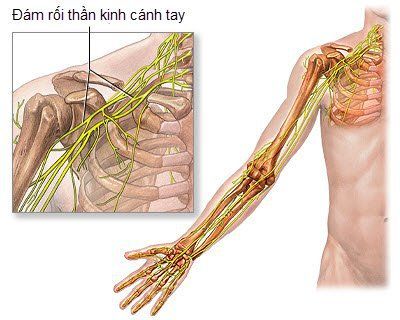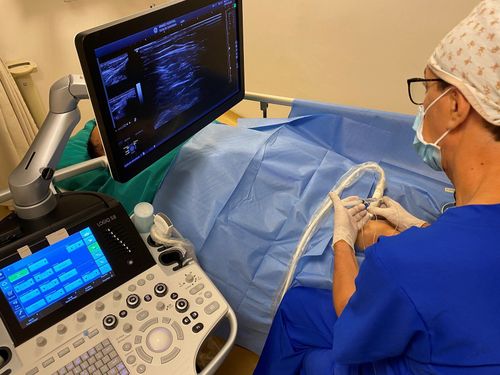This is an automatically translated article.
Nerve block is the injection of a nerve anesthetic into an organ or area of the body that is in pain. Injections can provide pain relief for various purposes such as pre- and post-operative pain prevention, acute pain management, etc.
1. Nerve blockade in pain control
Nerve blockade comes in different forms, used for different pain control purposes:
Therapeutic Nerve Blockade: Used to treat painful sites in the body. They contain a local anesthetic that is used to control acute pain. Diagnostic nerve block: Used to identify the source of pain. They often contain anesthetic agents in concentrations that have been calculated to match the duration of anesthesia. Prognostic nerve block: To predict the outcome of certain treatments. For example, it may be done to determine if longer-term treatments such as surgery are successful in treating the pain. Preventive nerve block: Aims to prevent pain later from a procedure that could cause problems including limb pain. In some cases, nerve block can be used to avoid surgery.
2. Types of Nerve Blockages
Nerve blockade can be used in different body areas. Below is information about the areas where nerves can be controlled for treatment, diagnosis, prognosis, and more.
Trigeminal nerve block (face) Ocular nerve block (eyelids and scalp) Supraorbital nerve block (forehead) Maxillary nerve block (maxillary) Sphenopalatine nerve block (nose and palatal) Cervical, thoracic and lumbar epidural blocks (neck and back) Cervical plexus and cervical vertebral block (shoulder and upper neck) Brachial plexus block , elbow and wrist block (shoulder/arm/hand, elbow and wrist) Subarachnoid block and celiac plexus (abdomen and pelvis) In addition, other types of nerve block include :
Sympathetic Nerve Blockade : The sympathetic nerve block is a network of nerves that extends the length of the spine. These nerves control some of the body's involuntary functions, such as constriction and dilation of blood vessels. Star ganglion block: This is a type of sympathetic nerve blockade done to determine if there is damage to the sympathetic nerve chain supplying the head, neck, chest, or arms and whether it is is the source of pain in those areas. Although used primarily as a diagnostic block, astrocytoma can provide pain relief beyond the duration of anesthesia. Facet joint block: Also called a zygapophysial joint block, is done to determine if the facet joint is the source of pain. The facet joints are located at the back of the spine, where one vertebra slightly overlaps another. These joints guide and limit the motion of the spines.

Phong bế thần kinh có thể được sử dụng ở các vùng cơ thể khác nhau
3. Side effects and the risk of nerve blockage
Nerve blockade can bring many risks and side effects, including:
Raised blood sugar Rash Itchiness Gaining weight Extra energy Pain at the injection site Bleeding Death (in rare cases) Although many types of nerve blocks exist, this treatment is not always possible. If your pain is not related to pain in one or a small group of nerves, nerve blocks may not be right for you. Your doctor can advise you on whether this treatment is right for you.
Follow Vinmec International General Hospital website to get more health, nutrition and beauty information to protect the health of yourself and your loved ones in your family.
Please dial HOTLINE for more information or register for an appointment HERE. Download MyVinmec app to make appointments faster and to manage your bookings easily.
Reference source: webmd.com













